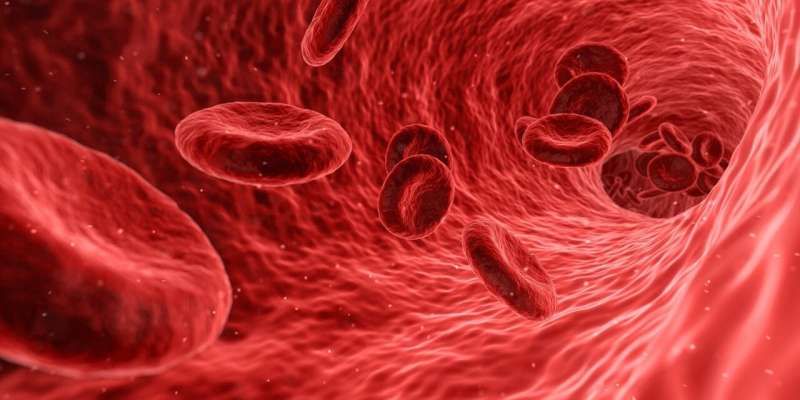Elevated clotting factor V levels linked to worse outcomes in severe COVID-19 infections

Patients hospitalized with severe COVID-19 infections who have high levels of the blood clotting protein factor V are at elevated risk for serious injury from blood clots such as deep vein thrombosis or pulmonary embolism, investigators at Massachusetts General Hospital (MGH) have found.
On the other hand, critically ill patients with COVID-19 and low levels of factor V appear to be at increased risk for death from a coagulopathy that resembles disseminated intravascular coagulation (DIC), a devastating, often fatal abnormality in which blood clots form in small vessels throughout the body, leading to exhaustion of clotting factors and proteins that control coagulation, report Elizabeth M. Van Cott, MD, investigator in the deparment of pathology at MGH and colleagues.
Their findings, based on studies of patients with COVID-19 in MGH intensive care units (ICUs), point to disturbances in factor V activity as both a potential cause of blood clotting disorders with COVID-19, and to potential methods for identifying at-risk patients with the goal of selecting the proper anticoagulation therapy.
The study results are published online in the American Journal of Hematology.
"Aside from COVID-19, I've never seen anything else cause markedly elevated factor V, and I've been doing this for 25 years," Van Cott says.
Patients with severe COVID-19 disease caused by the SARS-CoV-2 virus can develop blood clots in medical lines (intravenous lines, catheters, etc), and in arteries, lungs, and extremities, including the toes. Yet the mechanisms underlying coagulation disorders in patients with COVID-19 are still unknown.
In March 2020, in the early days of the COVID-19 pandemic in Massachusetts, Van Cott and colleagues found that a blood sample from a patient with severe COVID-19 on a ventilator contained factor V levels high above the normal reference range. Four days later, this patient developed a saddle pulmonary embolism, a potentially fatal blood clot occurring at the junction of the left and right pulmonary arteries.
This pointed the investigators to activity of factor V as well as factor VIII and factor X, two other major clotting factors. They studied the levels of these clotting factors and other parameters in a group of 102 consecutive patients with COVID-19, and compared the results with those of current critically ill patients without COVID-19, and with historical controls.
They found that factor V levels were significantly elevated among patients with COVID-19 compared with controls, and that the association between high factor V activity and COVID-19 was the strongest among all clinical parameters studied.
In all, 33 percent of patients with factor V activity well above the reference range had either deep vein thrombosis or a pulmonary embolism, compared with only 13 percent of patients with lower levels. Death rates were significantly higher for patients with lower levels of factor V (30 percent vs. 12 percent), with evidence that this was due to a clinical decline toward a DIC-like state.
Van Cott and colleagues also found that the clinical decline toward DIC was foreshadowed by a measurable change in the shape or "waveform" of a plot charting light absorbance against the time it takes blood to coagulate (waveform of the activated partial thromboplastin time, or aPTT).
"The waveform can actually be a useful tool to help assess patients as to whether their clinical course is declining toward DIC or not," Van Cott explains. "The lab tests that usually diagnose DIC were not helpful in these cases."
Importantly, the MGH investigators note that factor V elevation in COVID-19 could cause misdiagnosis of some patients, because under normal circumstances factor V levels are low in the presence of liver dysfunction or DIC. Physicians might therefore mistakenly assume that patients instead have a deficiency in vitamin K.
"This investigation was spurred by the surprising case we encountered, and was conducted rapidly by an interdisciplinary pathology team at MGH during the peak of the pandemic," said Jonathan Stefely, MD, Ph.D., one of the study's co-authors.
More information: Jonathan A. Stefely et al, Marked factor V activity elevation in severe COVID ‐19 is associated with venous thromboembolism, American Journal of Hematology (2020). DOI: 10.1002/ajh.25979


















